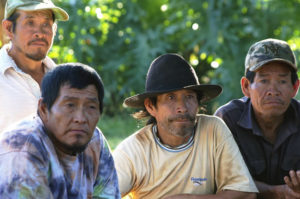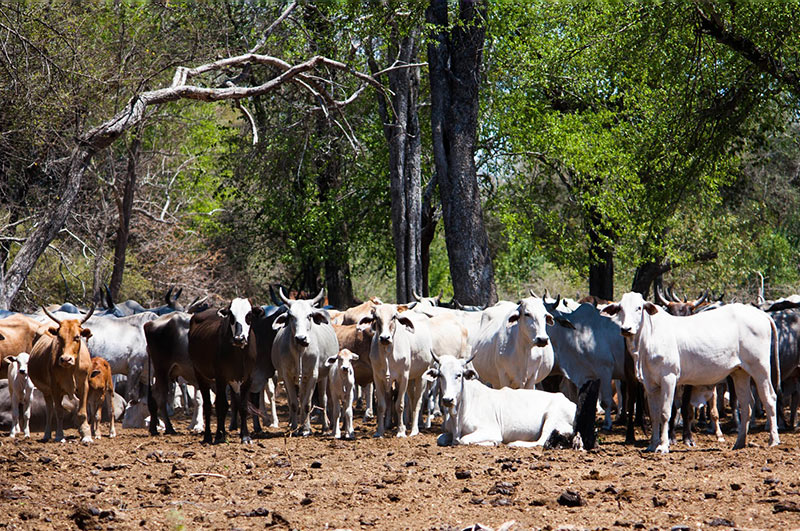The Landscape Approach is a process that facilitates land use planning and management for multiple stakeholders in a defined landscape. This can be a cultural region, a district with legal boundaries or a geographical defined region. Importantly, the Landscape Approach seeks to simultaneously address development and conservation goals at a landscape scale.
 Important stakeholders may be excluded from the Landscape Approach if landscapes are defined purely by cultural or geographical boundaries. A landscape for a water catchment area, for example, could be defined by the geographical catchment area, or by the local community that lives within the catchment area. Developing a land use plan for a water catchment area is likely to involve stakeholders outside the water catchment area, such as governments or remote stakeholders with water access rights. Landscapes can be defined in many ways, but from a land use planning point of view, landscapes are most usefully defined by stakeholders rather than natural catchments or landforms.
Important stakeholders may be excluded from the Landscape Approach if landscapes are defined purely by cultural or geographical boundaries. A landscape for a water catchment area, for example, could be defined by the geographical catchment area, or by the local community that lives within the catchment area. Developing a land use plan for a water catchment area is likely to involve stakeholders outside the water catchment area, such as governments or remote stakeholders with water access rights. Landscapes can be defined in many ways, but from a land use planning point of view, landscapes are most usefully defined by stakeholders rather than natural catchments or landforms.
Ultimately the Landscape Approach seeks to develop an ongoing planning and management process, which delivers an equitable land use balance for all stakeholders within a particular landscape.
The Landscape Approach will often include (WWF 2015):
- Engaging all key stakeholders in a participatory process to discuss, design and manage landscape action
- Recognising the motivations of all key stakeholders, which often involves analysis of issues, drivers and spatial relationships
- Collaborative planning
 WWF supports the Landscape Approach
WWF supports the Landscape Approach
Promoting the Landscape Approach is a core component of WWF’s Sustainable Land Use Planning and Management Program. The Program seeks to develop new tools and concepts for land use planning and management that will help achieve environmental, social and economic benefits in areas where agriculture, forestry and other productive land use compete with environmental and biodiversity goals.
10 principles of the Landscape Approach
A special feature on the Landscape Approach was published in the Proceedings of the National Academy of Science (PNAS) during 2013. The special feature, written by Jeffry Sayer et al, identified ten principles that are commonly applied to the Landscape Approach.
These principles include:
- Landscape processes are dynamic and landscape change must inform decision-making.
- Solutions to problems need to be built on a shared negotiation processes.
- Landscape function can be influenced by a range of feedback mechanisms, synergies, interactions, external influences and constraints. Outcomes at any scale are shaped by processes operating at other scales. An awareness of these higher and lower level processes can improve local intervention.
- Landscapes and their components have multiple uses, each of which is valued in different ways by different stakeholders.
- Developing a Landscape Approach requires a patient iterative process of identifying stakeholders and recognising their concerns and aspirations.
- Coordinating activities by diverse stakeholders requires a shared vision and a broad consensus on general goals, challenges, concerns, options and opportunities. Building and maintaining such a consensus is a fundamental goal of a Landscape Approach.
- Rules on resource access and land use need to be clear. The rights and responsibilities of different stakeholders need to be clear and accepted by all stakeholders.
- Information can be derived from multiple sources. To facilitate shared learning, information needs to be widely accessible.
- Wholesale unplanned system changes are usually detrimental and undesirable. Planned change must consider the resilience of the landscape.
- People require the ability to participate effectively in the Landscape Approach process. Effective participation requires social, cultural and financial skills that can be adapted and applied to new issues as they are raised by the Landscape Approach process.



